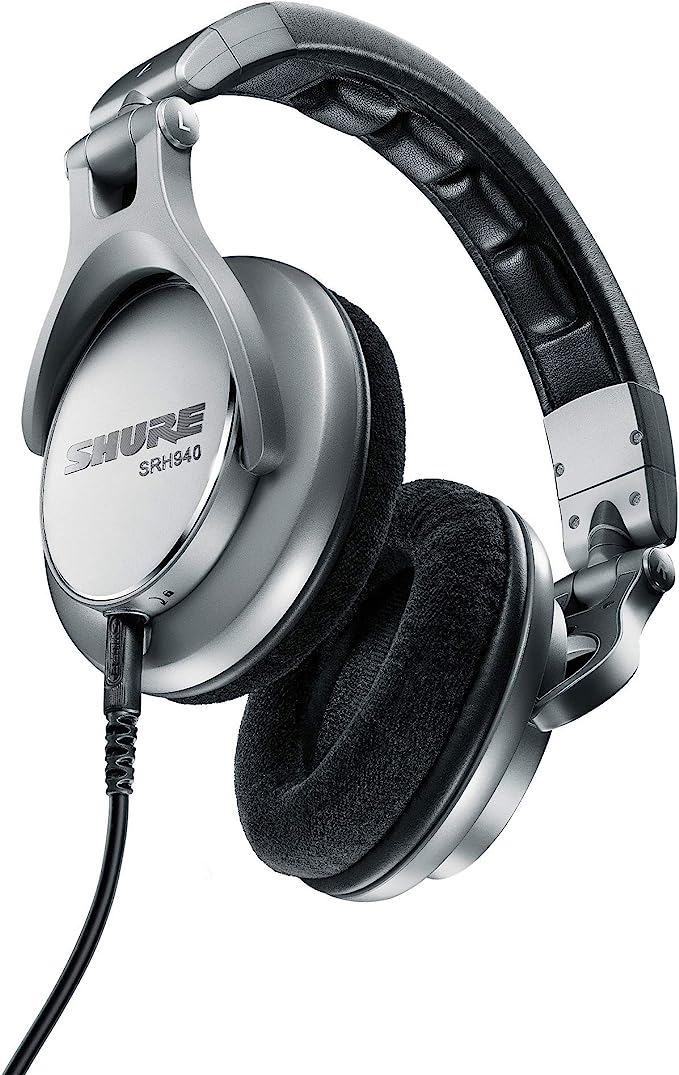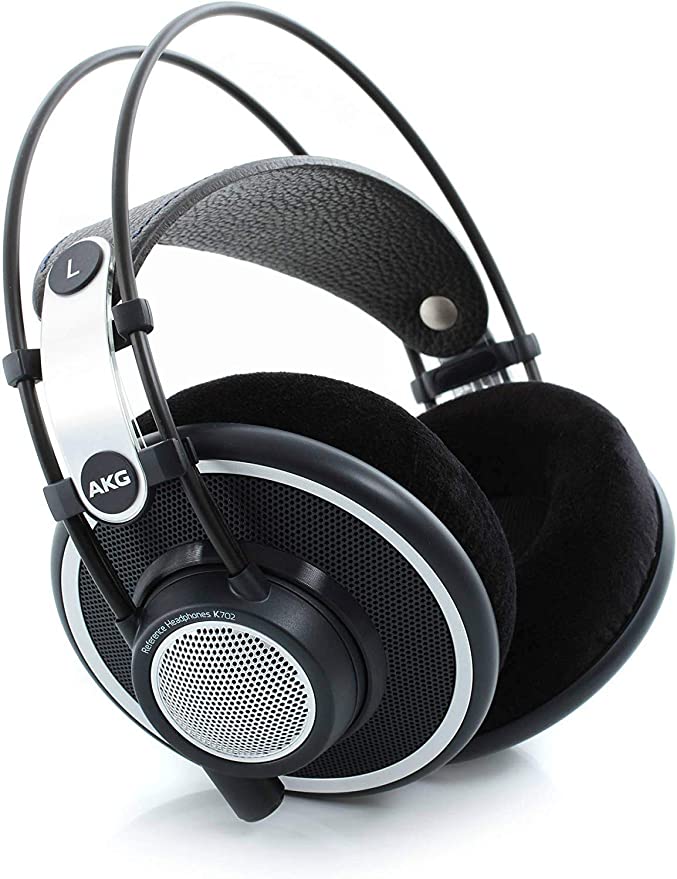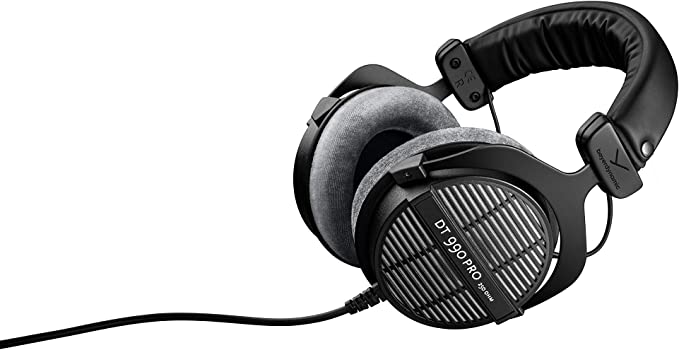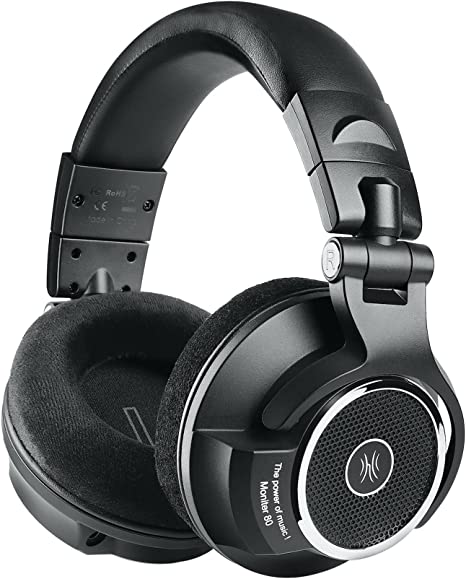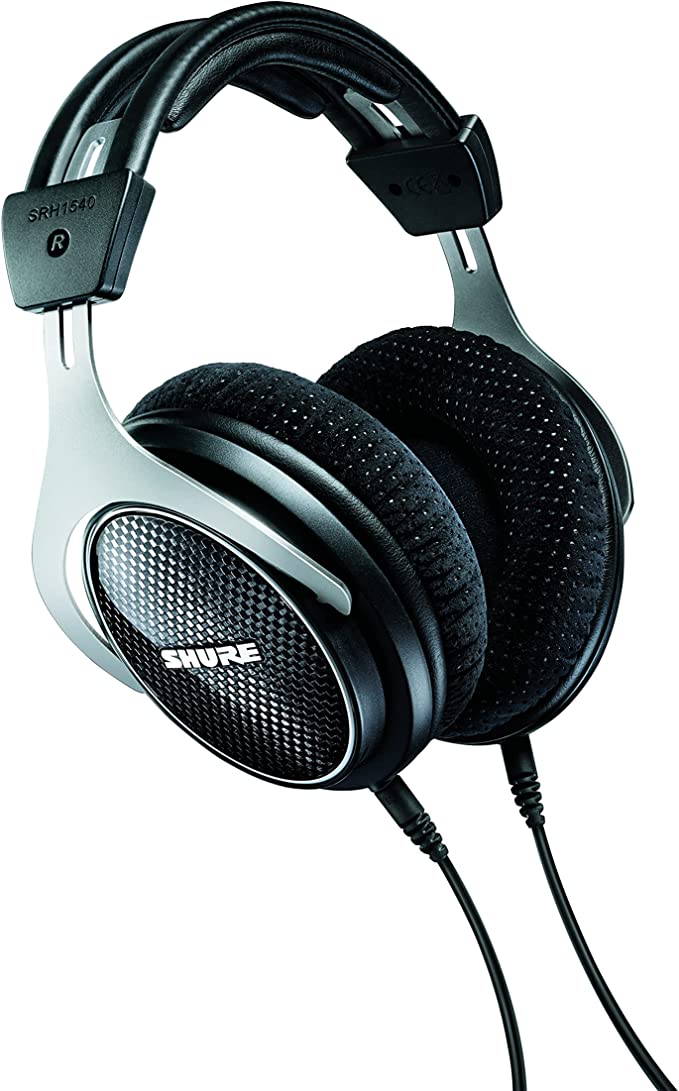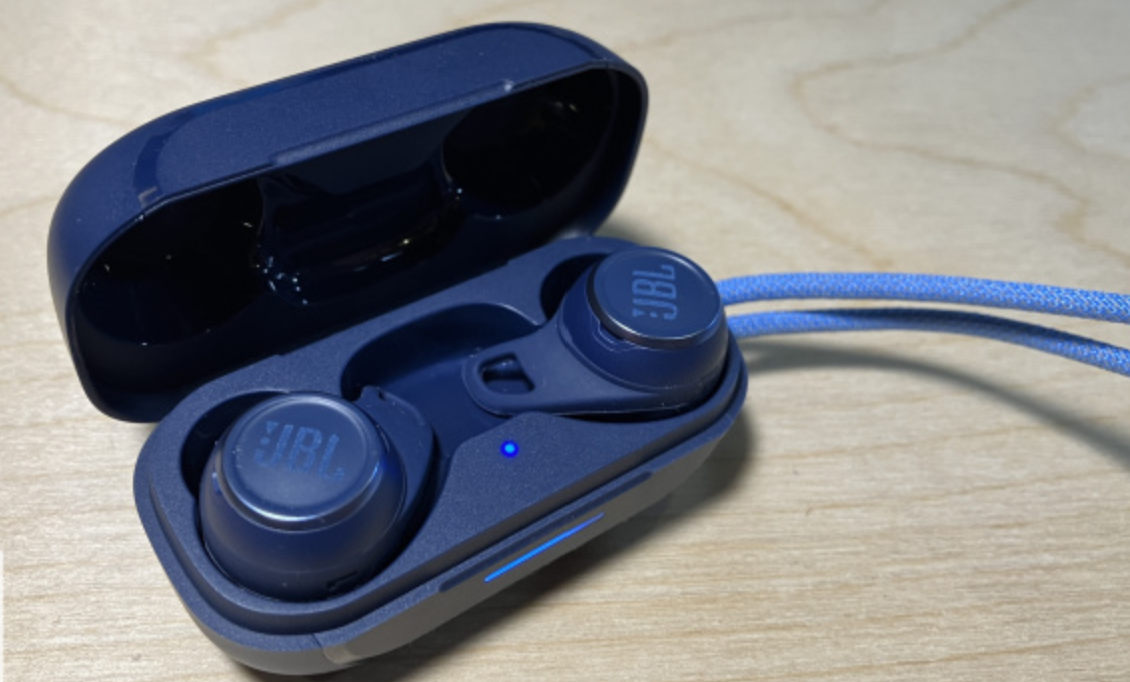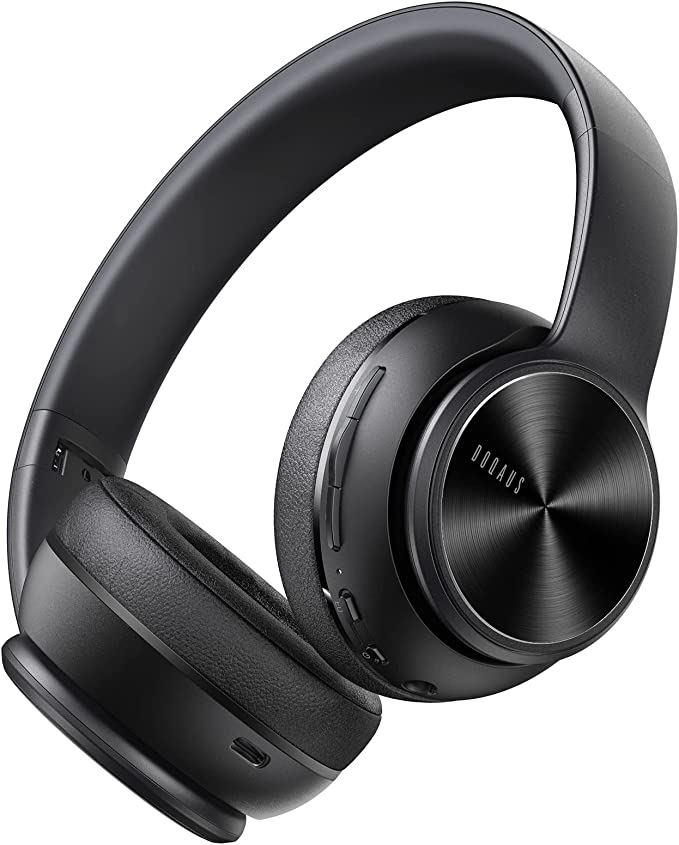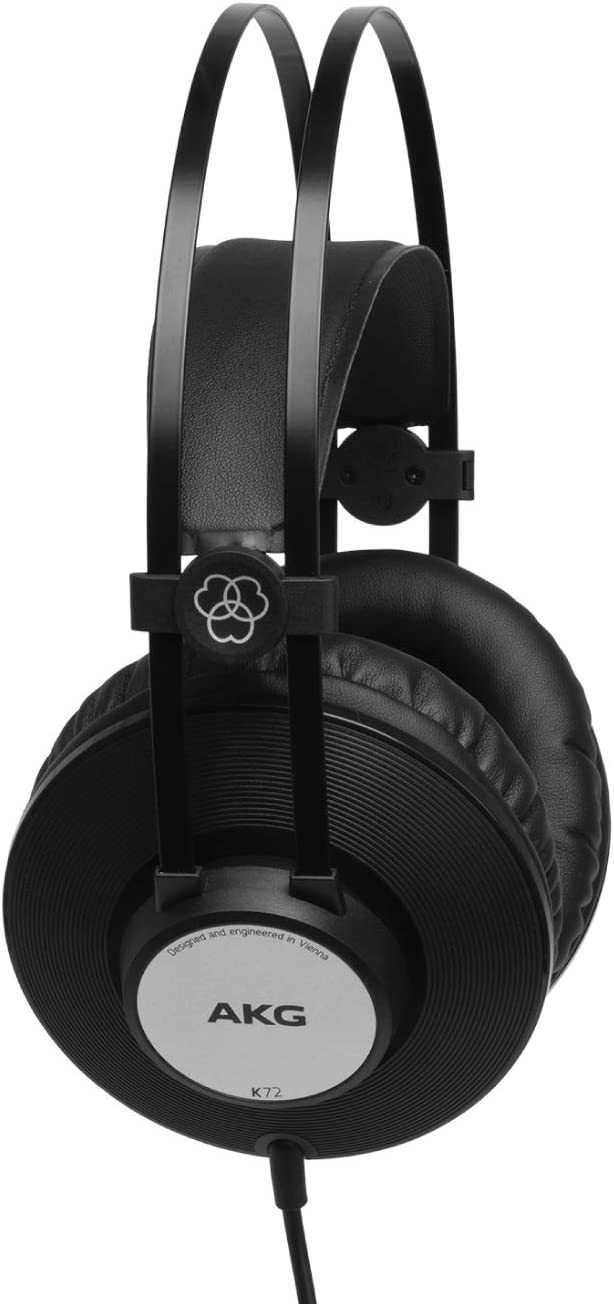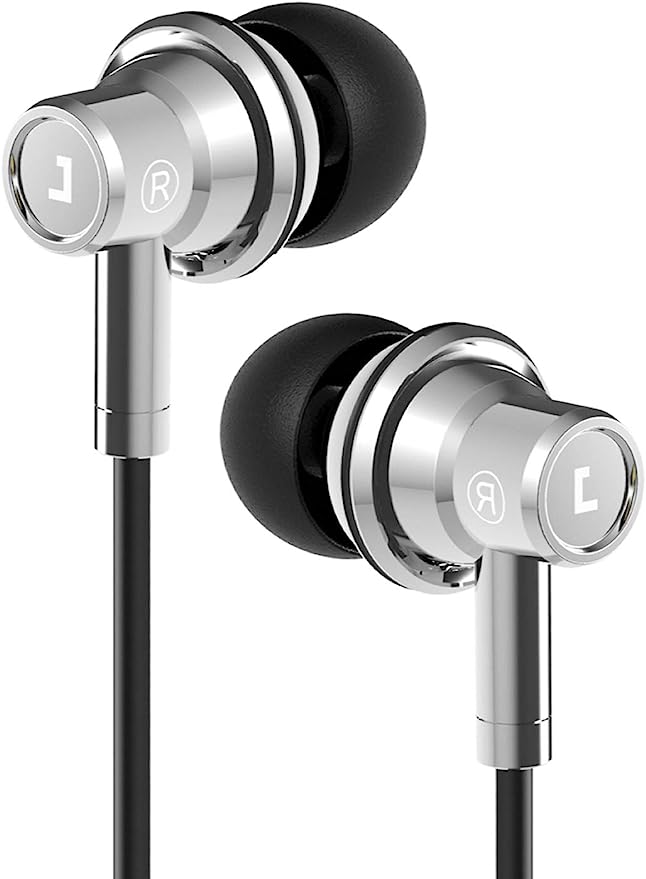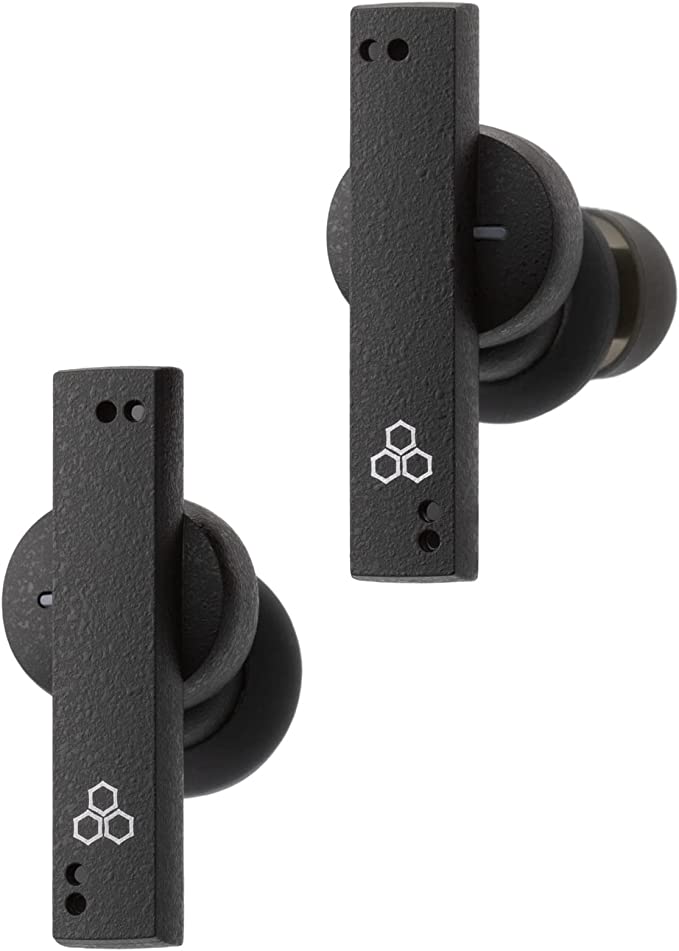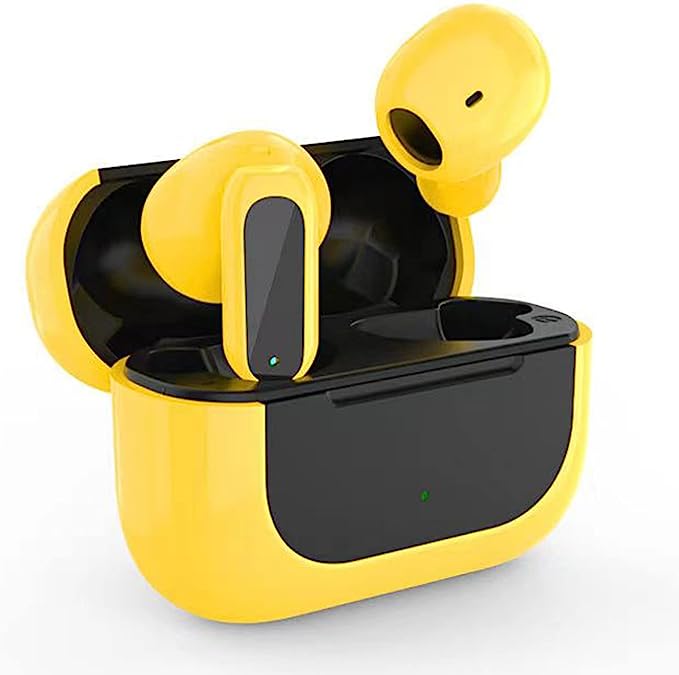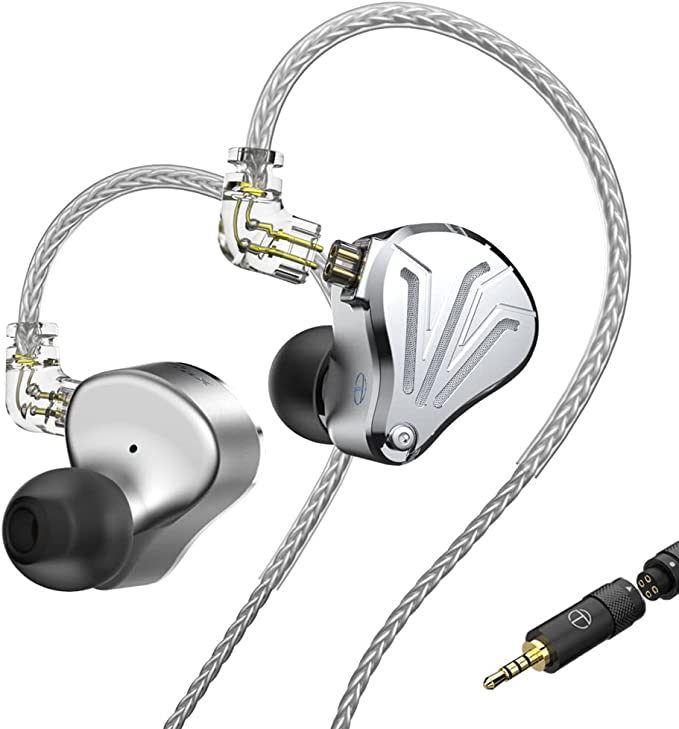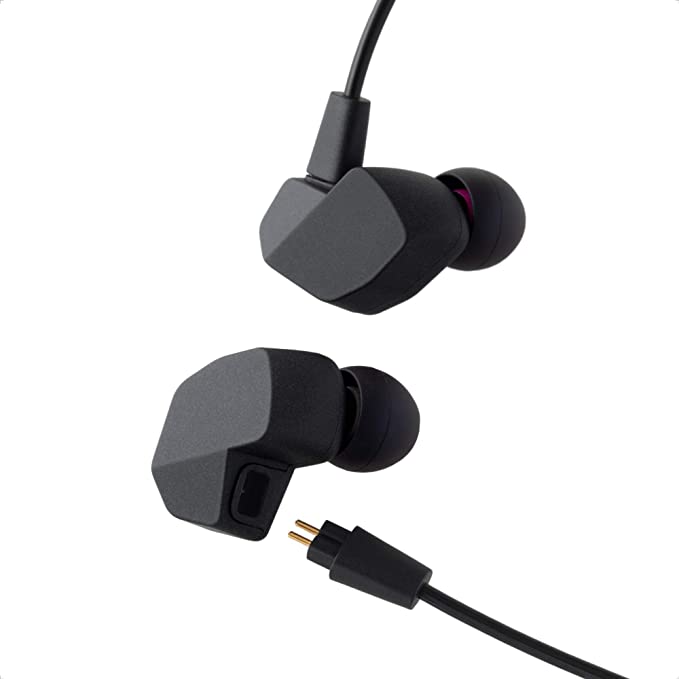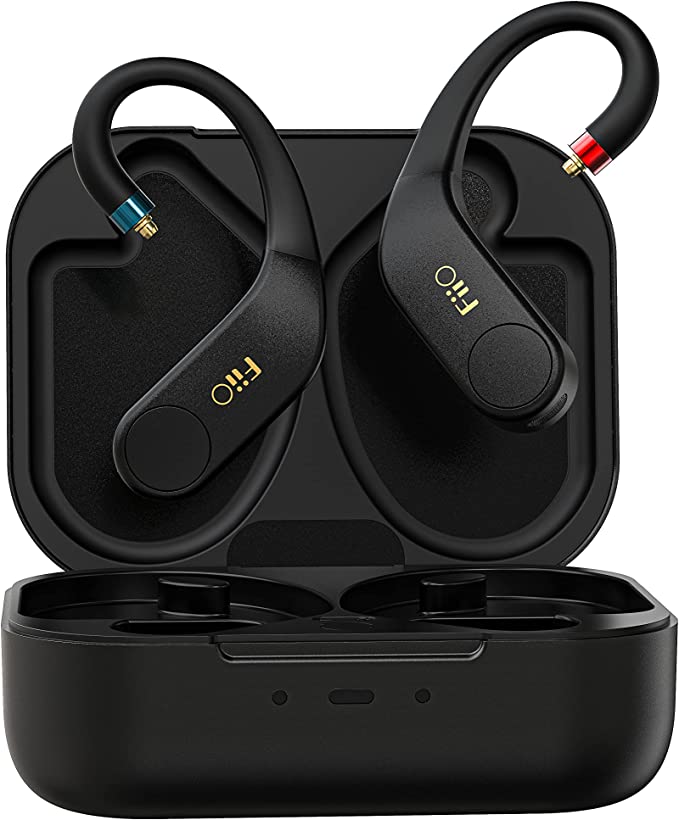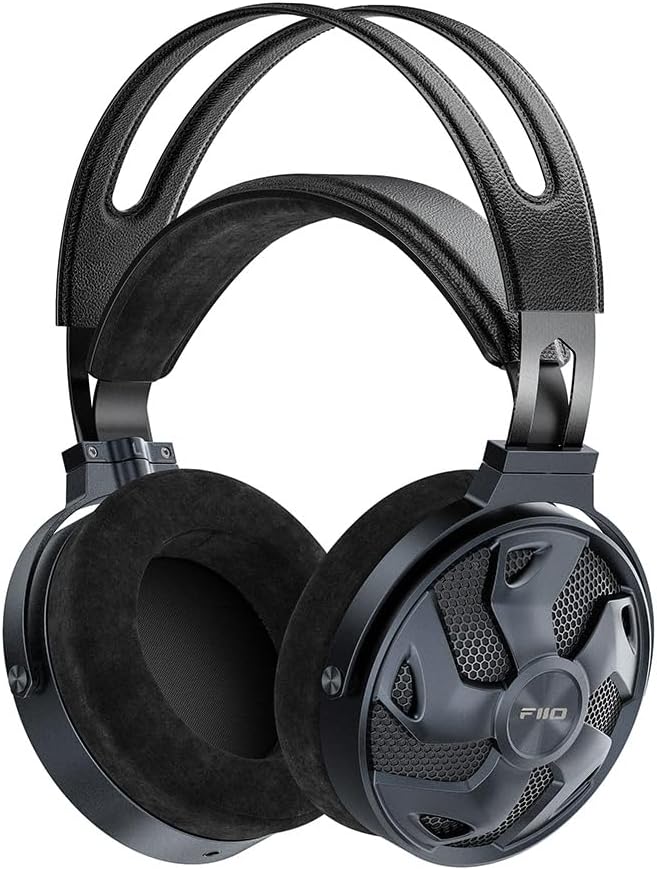Beyerdynamic DT 1990 Pro: The Science of Sonic Precision in Open-Back Studio Headphones
Update on May 30, 2025, 12:42 p.m.
The human endeavor to capture, preserve, and reproduce sound with unerring authenticity is a tale as old as a an audiotape hiss and as modern as a lossless digital stream. It’s a quest driven by both artistic aspiration and scientific rigor – a desire to hear not just a facsimile of a performance, but its very soul. In this pursuit, certain instruments rise above the rest, becoming trusted extensions of the creator’s ear and the listener’s perception. The beyerdynamic DT 1990 Pro Open Studio Headphones are one such instrument, born from a lineage stretching back to 1924 when Eugen Beyer first began crafting audio transducers in Germany. This heritage, steeped in meticulous engineering and a profound understanding of acoustics, infuses these headphones with a purpose: to serve as an unflinching conduit to sound, a sonic scalpel capable of dissecting the most complex auditory landscapes. But what science allows a pair of headphones to lay claim to the coveted “reference” title, and how does the DT 1990 Pro embody these principles?

The Tesla Heartbeat: Power, Precision, and the Pursuit of Uncolored Sound
At the very core of the DT 1990 Pro’s auditory prowess lies beyerdynamic’s proprietary Tesla driver technology. This isn’t merely a marketing flourish; it represents a significant leap in dynamic transducer design, rooted in fundamental electromagnetic principles. Imagine the engine of a Formula 1 car – not just powerful, but capable of instantaneous throttle response and incredibly fine control. Tesla technology aims for a similar level of acoustic command.
The “Tesla” designation refers to the unit of magnetic flux density. These drivers employ exceptionally potent neodymium ring magnets engineered to generate a magnetic field strength exceeding one Tesla. This intense magnetic field bathes a meticulously designed, lightweight voice coil. The scientific implication? According to the Lorentz force principle (which dictates that a current-carrying conductor in a magnetic field experiences a force), a stronger magnetic field allows for a greater motive force to be applied to the diaphragm for a given electrical input, or conversely, allows for a lighter, more agile voice coil and diaphragm assembly while maintaining high efficiency.
This translates into several tangible acoustic benefits:
- Exceptional Efficiency and Dynamic Range: The DT 1990 Pro boasts a nominal sound pressure level of 102 dBSPL (measured at 1mW input at 500Hz). This high sensitivity, especially for a 250-ohm headphone, means the Tesla drivers convert electrical signals into acoustic energy with remarkable efficiency. They can render the quietest pianissimo passages with delicate detail and erupt into a fortissimo crescendo without strain, faithfully reproducing the full dynamic sweep of a recording.
- The Science of Low Distortion: One of the primary enemies of faithful sound reproduction is distortion – the introduction of frequencies not present in the original signal. The immense magnetic force in a Tesla driver exerts extraordinarily precise control over the diaphragm’s movement, even during complex, high-amplitude excursions. This minimizes non-linearities, such as harmonic and intermodulation distortion, resulting in a sound that is exceptionally clean and free from the “mud” or “grain” that can obscure fine detail. It’s like looking through an impeccably clean window versus a smudged one; the image (or sound) is simply clearer.
- Resolution and Transient Response Redefined: The combination of a powerful magnetic motor and a lightweight, yet rigid, diaphragm (the product description mentions titanium-coated acoustic fabric and precision-woven textiles, hinting at a sophisticated multi-layer design) allows for incredibly fast transient response. This is the ability to accurately reproduce the attack and decay of sounds – the snap of a snare drum, the pluck of a guitar string, the subtle breath of a vocalist. With a vast frequency response заявленный from 5 Hz to 40,000 Hz, the DT 1990 Pro aims to capture not just the fundamental tones but also the rich tapestry of overtones and ambient cues that define an instrument’s timbre and the recording’s atmosphere. This ability to resolve minute details is what often separates reference-grade headphones from their more consumer-oriented counterparts.

Breathing Room for Sound: The Airy World of Open-Back Acoustics
The DT 1990 Pro employs an open-back, circumaural (over-ear) design, a choice deeply rooted in acoustic science and critical for its intended application. Unlike closed-back headphones that seal the driver against the ear, creating an isolated acoustic chamber, open-back designs allow air and sound to propagate freely from the rear of the driver assembly.
The physics behind this choice leads to several distinct advantages for critical listening:
- Escaping the Box – Minimizing Resonances and Coloration: A sealed chamber, as found in closed-back headphones, can act like a small room, prone to internal reflections, standing waves, and resonances at certain frequencies. These phenomena can “color” the sound, imprinting the headphone’s own sonic signature onto the music. The open design of the DT 1990 Pro dramatically reduces these issues by allowing sound energy to dissipate outwards rather than reflecting back towards the ear and driver. This results in a more transparent and uncolored sound, truer to the source material – a critical requirement for mixing and mastering engineers who need to make decisions based on what’s actually in the recording, not what the headphone is adding or subtracting.
- Crafting an Expansive Soundstage: One of the most celebrated characteristics of open-back headphones is their ability to create a soundstage that feels wide, deep, and “out-of-head.” This “speaker-like” presentation arises because the sound waves are not confined, allowing for a more natural interaction with the listener’s outer ear (pinna), which plays a crucial role in our perception of spatial cues. The result is an auditory experience where instruments and vocals seem to occupy distinct, palpable locations in a three-dimensional space, rather than being squeezed between the ears.
- Imaging Prowess and Separation: Coupled with the precision of the Tesla drivers, this open acoustic environment allows for exceptionally accurate stereo imaging. The listener can more easily discern the placement of individual instruments within the mix, the subtle movements of a sound source, and the depth of reverberant spaces. This clarity and separation are invaluable when making critical mixing decisions regarding panning, balance, and effects.
- The Necessary Trade-off: Sound Isolation: The very openness that provides these acoustic benefits also means that open-back headphones offer minimal isolation from external noise. Similarly, they leak sound outwards, potentially disturbing others nearby. This makes the DT 1990 Pro ideal for quiet studio environments or dedicated listening rooms, rather than commuting or open-plan offices. It’s a deliberate engineering choice prioritizing sonic accuracy over universal applicability.
The Artful Science of Tuning: Earpads as Acoustic Modifiers
Often overlooked by casual users, earpads are far more than just comfort elements; they are integral components of a headphone’s acoustic system, acting as a critical interface between the driver and the human ear. The DT 1990 Pro thoughtfully includes two distinct sets of velour earpads, labeled “A” (Analytical) and “B” (Balanced), allowing users to subtly tailor the sound signature. This isn’t arbitrary; it’s applied acoustics.
The science at play involves several factors:
- Acoustic Coupling and Seal: The way an earpad conforms to the head around the ear creates an acoustic seal. The density and type of foam (the DT 1990 Pro uses memory foam), and the covering material (velour in this case, known for its comfort and specific acoustic properties), influence the quality of this seal. A better seal generally aids in low-frequency reproduction.
- Chamber Volume and Damping: The internal volume of the earcup cavity created by the pad, and the absorptive/reflective properties of the pad’s inner surfaces and perforations (the “A” and “B” pads reportedly differ in their venting), significantly affect the sound waves before they reach the ear. These factors can dampen certain frequencies, control resonances, and shape the overall frequency response. For instance, denser, less porous materials might reflect more high-frequency energy, while more porous materials or strategic venting can influence bass resonance and extension.
- The Tale of Two Pads – “Analytical” (A) and “Balanced” (B):
- The “Analytical” earpads are generally reported by experienced listeners and reviewers (whose observations are often part of the extended product data) to provide a sound signature that emphasizes clarity and detail, particularly in the upper midrange and treble. This can be invaluable for forensic audio work, such as identifying subtle flaws in a mix or mastering a track for maximum clarity.
- The “Balanced” earpads, conversely, are often described as offering a slightly warmer, smoother presentation, perhaps with a fuller low-end perception. This might be preferred for longer listening sessions, general music enjoyment, or when a less overtly “analytical” sound is desired during certain stages of production.
- Interplay with the “Beyer-Peak”: Beyerdynamic headphones, particularly their professional models, have a reputation for a certain emphasis in the high frequencies (often informally dubbed the “Beyer-peak”). This characteristic, while contributing to their renowned detail retrieval and “airiness,” can be perceived as overly bright or even sibilant by some listeners, especially those with acute sensitivity in that region or on recordings that are already bright. The choice of earpads can subtly influence the prominence of this treble characteristic, with the “Balanced” pads potentially softening it slightly compared to the “Analytical” ones. Users like Nico H. (from the provided Amazon reviews) even noted successfully using equalization (EQ) to tame this peak to their preference, highlighting the interaction between headphone voicing, earpad acoustics, and individual hearing. Dr. Jules’ detailed review also emphasized the profound impact of the earpads, choosing the ‘B’ pads for a “truer representation of a delivery mix” despite a “bloomier bass,” showcasing the complex trade-offs involved.
This provision of two earpad types isn’t just a feature; it’s an acknowledgment of the subjective nature of sound perception and the varied demands of audio work, empowering the user with a degree of acoustic control.

The Pillars of Reference: Neutrality, Impedance, and Unmasking Detail
What truly elevates a headphone to “reference” status? It’s a confluence of design philosophies and performance characteristics aimed at one primary goal: sonic truth.
- The Elusive Ideal of Transparency: A reference headphone strives for neutrality, meaning it aims to reproduce the audio signal with minimal coloration – that is, without imposing its own sonic character onto the music. It should act as an unblemished window to the recording, allowing the engineer or listener to hear what is actually there, warts and all. This concept of low “coloration distortion” was a key point in Stanley Foote’s user analysis of the DT 1990 Pro, where he ranked it highly for its transparency. Achieving this involves meticulous driver design (like the low-distortion Tesla units), careful acoustic loading (the open-back principle), and precise tuning of the entire system.
- The 250-Ohm Consideration – An Engineering Choice: The DT 1990 Pro features a nominal impedance of 250 ohms. In the world of headphones, impedance values can range from a low 16-32 ohms (common in portable consumer devices) to 600 ohms or even higher in some specialized or vintage models. Higher impedance in professional headphones like these often stems from voice coil design choices that can contribute to performance. A longer, thinner wire can be used for the voice coil, potentially allowing for more turns within the magnetic gap (contributing to motor strength and efficiency) or different mass and inductance characteristics that can be beneficial for controlling diaphragm movement and reducing distortion. However, higher impedance headphones typically require a headphone amplifier with sufficient voltage output capability to drive them to adequate listening levels and to achieve optimal performance, particularly in terms of dynamic range and low-frequency control (damping factor). This is why they are commonly paired with dedicated headphone amplifiers, professional audio interfaces, or mixing consoles that are designed to handle such loads. The reported high sensitivity of the DT 1990 Pro’s Tesla drivers, as noted by reviewers, means they are somewhat less demanding than some other 250-ohm headphones, but a quality source and amplification are still key to unlocking their full potential.
- The Sum of its Parts – Unmasking Auditory Detail: Ultimately, the reference quality of the DT 1990 Pro is not down to a single feature but the synergistic interplay of all its components. The precision of the Tesla drivers captures the faintest nuances. The open-back design provides the spatial context and freedom from resonant coloration. The carefully tuned earpads offer a final shaping of the interface to the ear. Together, these elements work to unmask detail, separate instruments with crystalline clarity, and present a coherent, stable, and deeply informative sonic picture. This allows producers to identify issues like excessive sibilance in a vocal, a slightly misaligned bassline, or the subtle decay of a reverb tail – details that could be lost on less capable systems.

German Engineering Embodied: Material Integrity and Enduring Design
The “Made in Germany” label associated with beyerdynamic is more than a geographical marker; it signifies a tradition of precision manufacturing, robust engineering, and a commitment to quality that is palpable in the DT 1990 Pro.
- The Science and Sensibility of Material Choice: The construction utilizes a thoughtful selection of materials. The robust steel headband ensures durability and consistent clamping force over time. Aluminum yokes and earcup декоративные кольца contribute to a feeling of solidity without excessive weight. High-quality plastics are employed where appropriate for their acoustic properties and resilience. The extensive use of metal in critical structural components speaks to a design built for the rigors of daily professional use.
- Beyond Sound – The Ergonomics of Endurance: For a sound engineer, musician, or mastering professional, headphones are often worn for many hours consecutively. Comfort, therefore, is not a luxury but a necessity for sustained concentration and productivity. The DT 1990 Pro addresses this with generously padded, velour-covered memory foam earpads that conform to the head’s contours, distributing pressure evenly. The adjustable headband mechanism allows for a customized fit. The overall design aims to minimize listener fatigue, both aural (due to clear, undistorted sound) and physical.
- Modularity and Maintenance – A Nod to Longevity: Practical design choices further enhance the DT 1990 Pro’s value as a long-term investment. The single-sided, detachable cable uses a robust mini-XLR connector, which provides a secure, locking connection and is less prone to accidental disconnection than standard TRS plugs. The inclusion of both a straight and a coiled cable offers flexibility for different studio setups. Crucially, the earpads are user-replaceable. Given that earpads are a wear item, this significantly extends the usable lifespan of the headphones and ensures consistent acoustic performance over years of use. A premium hard case is also supplied for safe storage and transport.
These elements of build quality and thoughtful design are not merely aesthetic; they contribute to the headphones’ consistency, reliability, and the user’s ability to trust them as a dependable reference tool day in and day out.

Conclusion: Hearing More, Understanding Deeper
The beyerdynamic DT 1990 Pro is far more than an assembly of magnets, wires, and plush materials. It is a meticulously engineered acoustic instrument, a testament to the enduring power of scientific principles applied in pursuit of an artistic ideal: the faithful reproduction of sound. From the potent precision of its Tesla drivers and the airy expanse of its open-back architecture to the subtle but significant acoustic tailoring offered by its earpads, every facet of its design serves to strip away veils between the listener and the recording.
For the audio professional, it is a sonic scalpel, capable of revealing the finest details and imperfections, enabling informed decisions that shape the final auditory experience for millions. For the discerning audiophile, it is a clear window, offering an uncolored, immersive, and deeply engaging journey into the heart of music.
The quest for pure sound is, in many ways, a quest for understanding – understanding the artist’s intent, the engineer’s craft, and the intricate dance of sound waves that evoke such profound emotion. By delivering a remarkably truthful and transparent representation of audio, the DT 1990 Pro does not just allow us to hear more; it empowers us to understand deeper. In a world saturated with sound, such clarity is not just a luxury, but a vital tool for creation, appreciation, and the unending exploration of the auditory realm.
